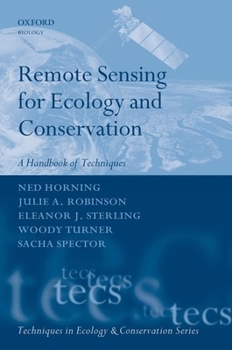Remote Sensing Ecology Conserv Tecs P
The work of conservation biology has grown from local studies of single species into a discipline concerned with mapping and managing biodiversity on a global scale. Remote sensing, using satellite and aerial imaging to measure and map the environment, increasingly provides a vital tool for effective collection of the information needed to research and set policy for conservation priorities. The perceived complexities of remotely sensed data and analyses have tended to discourage scientists and managers from using this valuable resource. This text focuses on making remote sensing tools accessible to a larger audience of non-specialists, highlighting strengths and limitations while emphasizing the ways that remotely sensed data can be captured and used, especially for evaluating human impacts on ecological systems.
Format:Paperback
Language:English
ISBN:0199219958
ISBN13:9780199219957
Release Date:August 2010
Publisher:Oxford University Press
Length:496 Pages
Weight:1.80 lbs.
Dimensions:0.9" x 6.2" x 9.2"
Customer Reviews
0 rating





